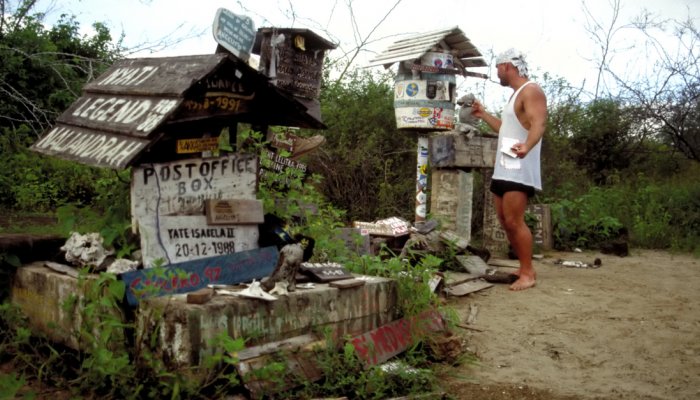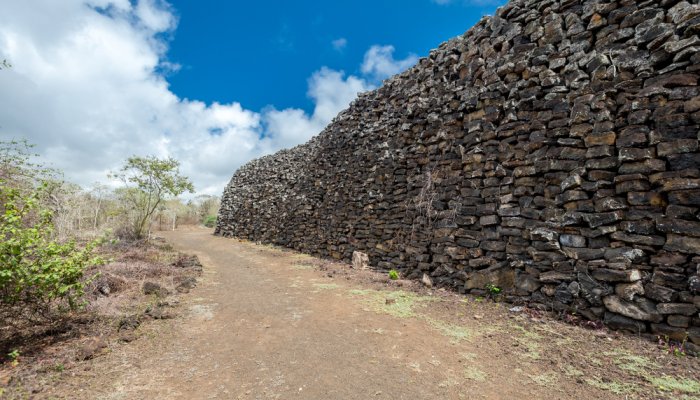BUCCANEER COVE
17th and 18th century buccaneers used to take sanctuary on Santiago Island, particularly stopping in the protected bay we now know as Buccaneer Cove. Red tuff cliffs stand about 50 meters high and form a protective screen on the short, shadowy beach. Pirates and marauders took shelter in the cover and stocked up on water and food before setting back out into the seas to commit their dastardly deeds. Learn more about the pirates here and on an active tour through the Galápagos.

POST OFFICE BAY
Post office Bay is another chapter in Floreana’s interesting history. Post Office Bay started up with whalers, who often stopped by the Galápagos islands to refresh their stores of food and water (alas, poor Galápagos giant tortoises got the short end of that stick).
In the 1700s, the whalers devised a clever way to communicate with their families and loved ones back in England, the U.S., or whatever port they called home. The sailors began leaving letters in a barrel on Floreana, and when other passing ships stopped by, other sailors would pick up the letters that matched their destination and deliver them. Of course, it would sometimes take years to deliver a letter—especially if you were hoping to deliver a letter to an unpopular port—but the rudimentary post office worked.
The Galápagos Post Office Bay continues working to this day! Galápagos visitors still drop off postcards and letters at Post Office Bay, where the letters wait until other visitors headed home close to the addressee take the letters back with them.
Today, the ramshackle Post Office Bay is covered in bright stickers and graffiti—a tumble of driftwood and signs. It’s definitely more whimsical than the lone barrel visited by whalers who hoped their missives would make it across oceans.

THE WALL OF TEARS
On Isabela Island, near Villamil, lies The Wall of Tears (El Muro de las Lágrimas)—one of the Galápagos Islands’ most interesting historical sites. Prisoners belonging to a penal colony on Isabela constructed The Wall of Tears by hand in the late 1940s-1950s. As part of their punishment, the prisoners cut and carried the volcanic rock as well as constructed the wall that lies over 8 meters high and over 100 meters long.
The Wall of Tears has no purpose beyond serving as a punishment, and today it stands as a reminder that one man’s paradise can be another man’s prison. At the entrance, a sign states: “here the strong cry and the weak die.”

